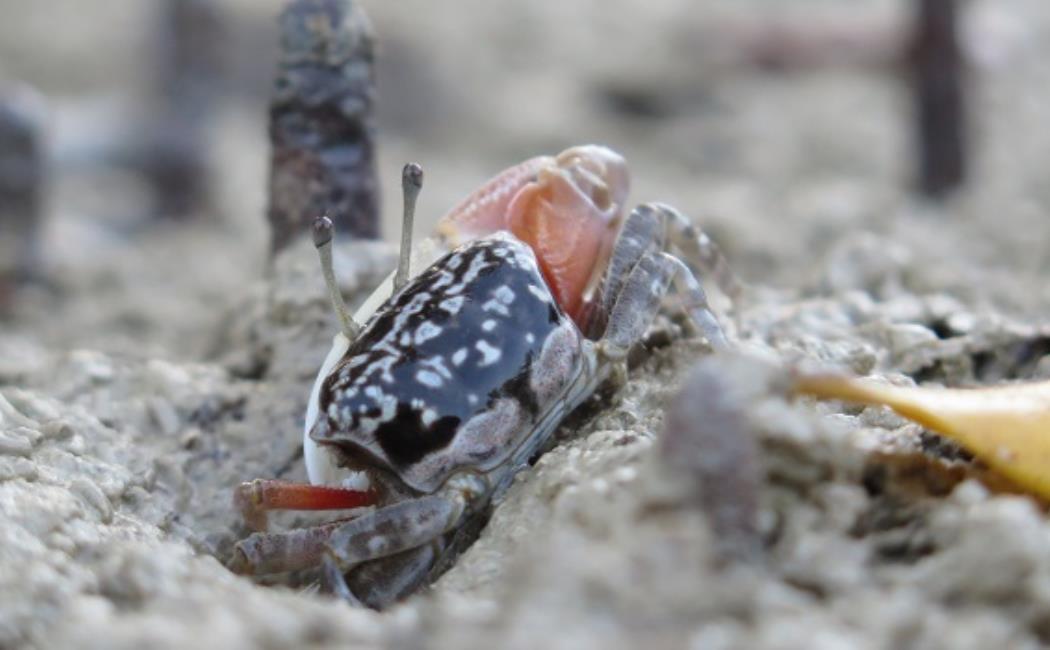
The fiddlers influencing mangrove ecosystems
11 March, 2019
The types of bacteria present in and around mangrove fiddler crab burrows in three different geographic locations were compared by KAUST researchers. They found that the crabs' burrowing activity changed the sediment in a way that attracted different types of bacteria across the three locations: however, the bacteria performed similar functions, such as aerobic respiration, and potential ecological services, such as turnover of organic matter.
“Mangrove crabs act like ecosystem engineers: Their burrows create radial, halo-like microbiological and geochemical modifications to the surrounding sediment compared with soil that has been left undisturbed,” says Jenny Booth, the first author of the study. “This effect was similar in all three locations, with the burrow-dwelling bacteria being taxonomically different but functionally similar,” she adds.
Microorganisms play important roles in driving global biochemical cycles, such as the nitrogen cycle, in which nitrogen—a building block of proteins and nucleic acids— circulates among the earth, the atmosphere and marine ecosystems.
Click here to read the full story
Image: Fiddler crabs play an important role in sediment mixing in mangrove ecosystems.
© 2019 Marco Fusi